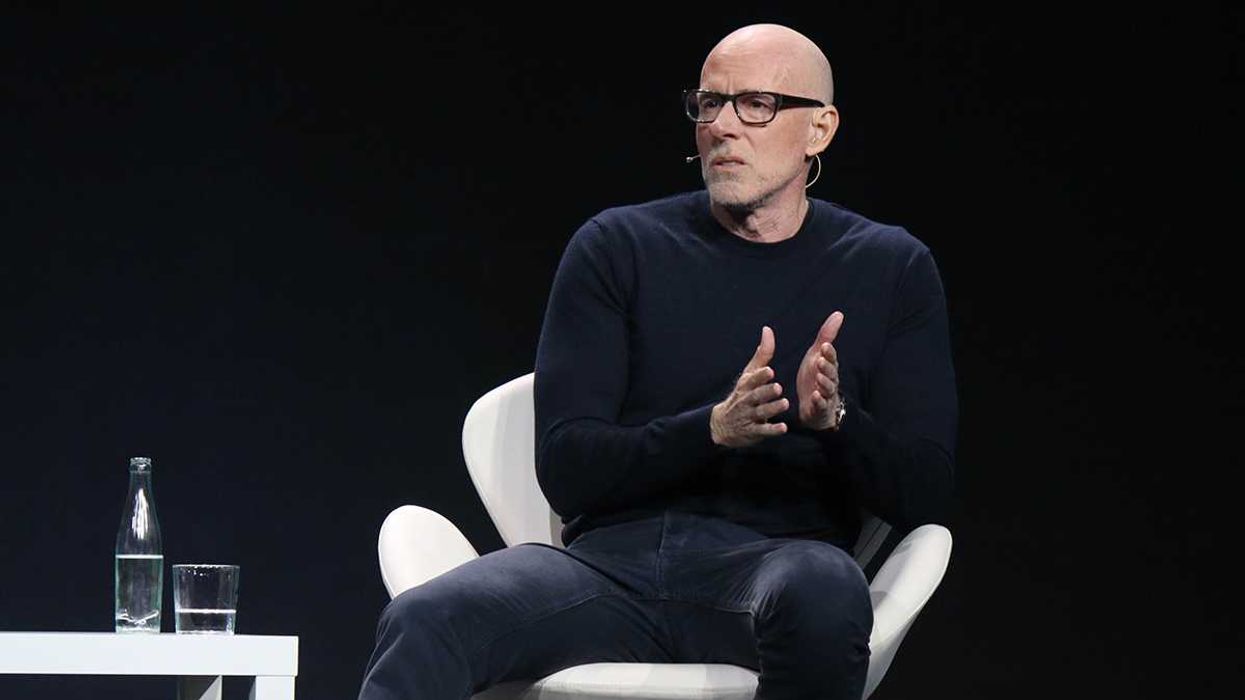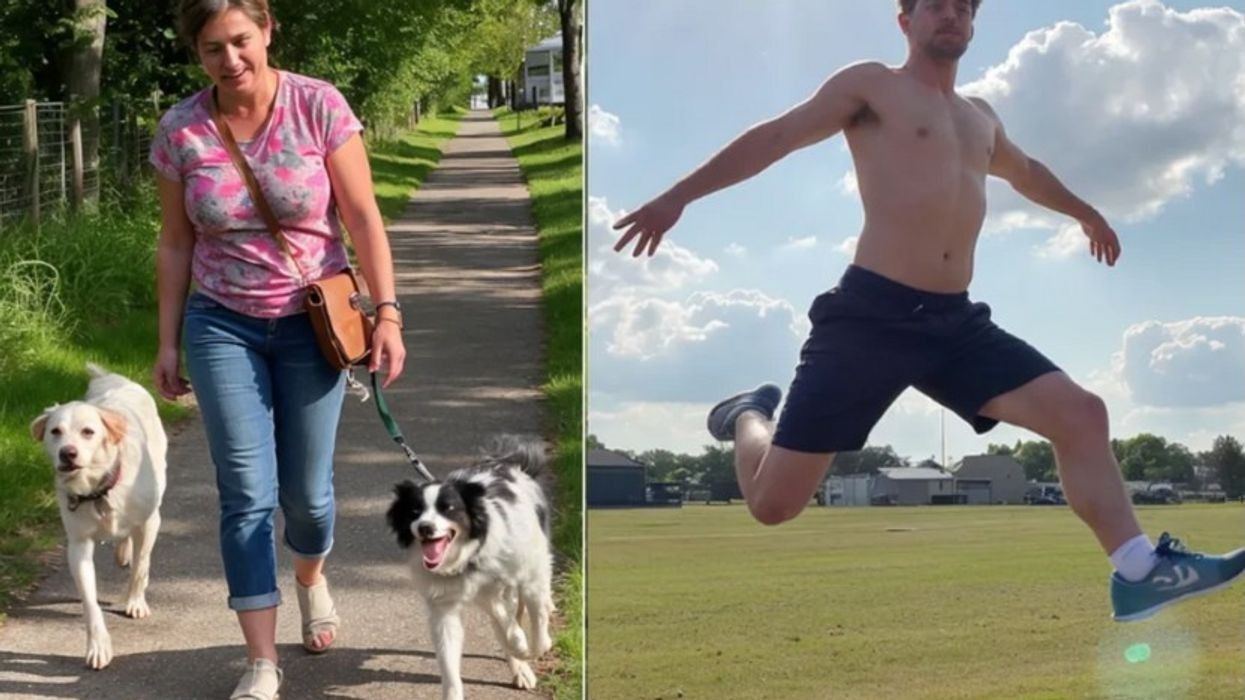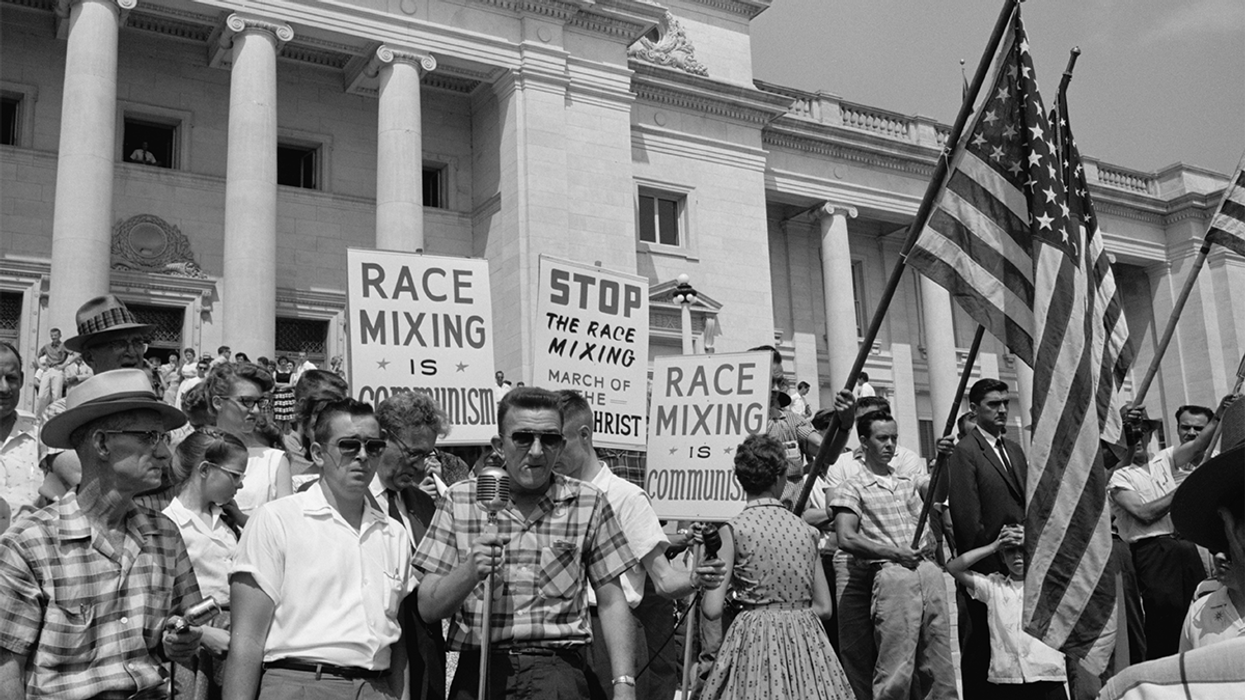It would be a severe understatement to call LA fashion label No Sesso a work of art. Especially when you have been witness to the hours of intricate, exacting labor that goes into the construction of each garment. On any given day, you will find the room where No Sesso founder and designer Pierre Davis produces the collection overflowing, with mountains of embroidery floss, every type of fabric imaginable, and racks of meticulously crafted clothing. One denim jacket—which depicts a scene of the fantasy “No Sesso Bump & Curl Salon” in stunning, detailed hand embroidery—took six months to complete. Artists like Mykki Blanco, Le1f, and Kelsey Lu stop by to pull looks, and someone from the No Sesso team is usually around for brainstorming sessions. That team includes stylist and casting director J. Sims, assistant designer Leo King, and Arin Hayes, who helps with marketing and content production.
No Sesso’s models are almost exclusively queer, trans, and nonbinary people of color. Every intention, every image and every garment is a tribute to the elegant beauty of black women, trans and gender-fluid folks, sex workers, and the marginalized people that fashion has historically exploited, rejected, and discredited. While, in recent years, many designers and fashion industry leaders have paid lip service to the subjects of diversity and accessibility in fashion, few are actually putting it into practice the way No Sesso is doing. I talked to the No Sesso team as they were wrapping up a one month pop-up shop at LA’s Sade Gallery that will end with a party on April 22.
How did No Sesso start? What did you see lacking in the fashion industry that inspired you to become a designer?
Davis: No Sesso started in 2012 when I was going to school for fashion design. The instructor gave the class a project to create a collection, find a target market, and construct three looks for a class presentation. I was having a hard time finding clothing I could relate to in stores and was so tired of everything being "only" for women or men … there was nothing for people in between.
[quote position="right" is_quote="true"]No Sesso is a never-ending peaceful protest—shaping the future of fashion, where everyone can wear whatever they want and feel confident.[/quote]
Shopping for new clothes can be very frustrating because some girls have broad shoulders and some men are petite. I wanted and still strive to break these fashion binaries because they are very problematic and lead to a lot of insecurities and anxiety for people. Getting dressed is something we all have to do on a daily basis, and I want to make clothes that everyone can wear comfortably. The worst thing is going out and seeing the perfect dress, but it doesn’t fit because it's only made for a "certain shape." With No Sesso, I want to create for all shapes, sizes, and identities. I notice in fashion that androgyny and trans women are often trendy or “in season.” No Sesso is a never-ending peaceful protest—shaping the future of fashion, where everyone can wear whatever they want and feel confident.
There is always a story behind your collections. One of your most moving and profound collections, “Working Girls,” was about the empowerment of sex workers. Can you tell me more about that?
Davis: Yes, “Working Girls” is a peaceful protest for sex workers. Black trans women have it the worst in this world. We are dying constantly—from hate crimes to not having proper health care. Where I live, I see a lot of black and Latina trans women working at night, on Santa Monica Boulevard. Most of the world looks at these women as if they are doing something bad. There is nothing wrong with sex work; what's wrong is how sex workers are stigmatized. Not all sex workers want to make a living doing this line of work. However, it’s a fast way to make cash when corporate America doesn’t give you a chance because you're not "passing" or "professional."
I dedicated this collection to sex workers because, at the end of the day, they are out here trying to survive just like the rest of us. It's important to shed a light on them that shows them as regular, everyday people.
J, how do you choose the models and style the garments to make the most impact?
Sims: A major mission of the brand is to make our work accessible to those excluded from the fashion scene, so the majority of the models we work with are friends of ours. Personalities are important, so when we work with someone new, I usually find them on Instagram, which is a good way to see what they're like and what their interests are. I look for people that reflect the DNA of the brand and that represent the kind of real people that we're surrounded with … free spirits, artists, rebels, people that really understand what we're trying to do. Styling is the easy part. I imagine how my friends would wear the pieces, and I collect all the bits of the No Sesso world that Pierre has built and arrange them into outfits.
Repurposing materials to create such high-end luxury garments is such a powerful statement. Tell me why using repurposed fabrics is important to you, Pierre.
Davis: The more we reuse, the less damage we are contributing to. No Sesso plans to take as little part as possible in adding to the ecological footprint.
LA is not traditionally included in the conversation about fashion-forward cities. What’s it like being a designer here? What differs in your creative process from say, someone who lives in New York?
Davis: You would think LA would be a major fashion city by now, but it’s definitely on its way there. When I go to the fashion district downtown, I'm constantly inspired.
I would say my creative process is different because I'm not making collections to traditionally follow fashion guidelines. For example, I don't need to show my collections for spring/summer during the season that all the other designers are showing. I’d rather show when the season is approaching so my clientele doesn’t have to wait months to get looks from the runway. I wouldn't say it's easier to design here, but I will say it's not as competitive.
What will your next few collections be about? What can we expect to see from you in the future?
Davis: I can't say too much what the next collections will be about because that spoils the surprise when I present it to the world. All future collections will continue to bring light to important matters in the world. In the future I want the brand to become more global so that we can fight against hate and donate to important matters. I would love to collaborate with an organization that caters to trans women of color. I just want us safe and healthy.
















 Otis knew before they did.
Otis knew before they did.